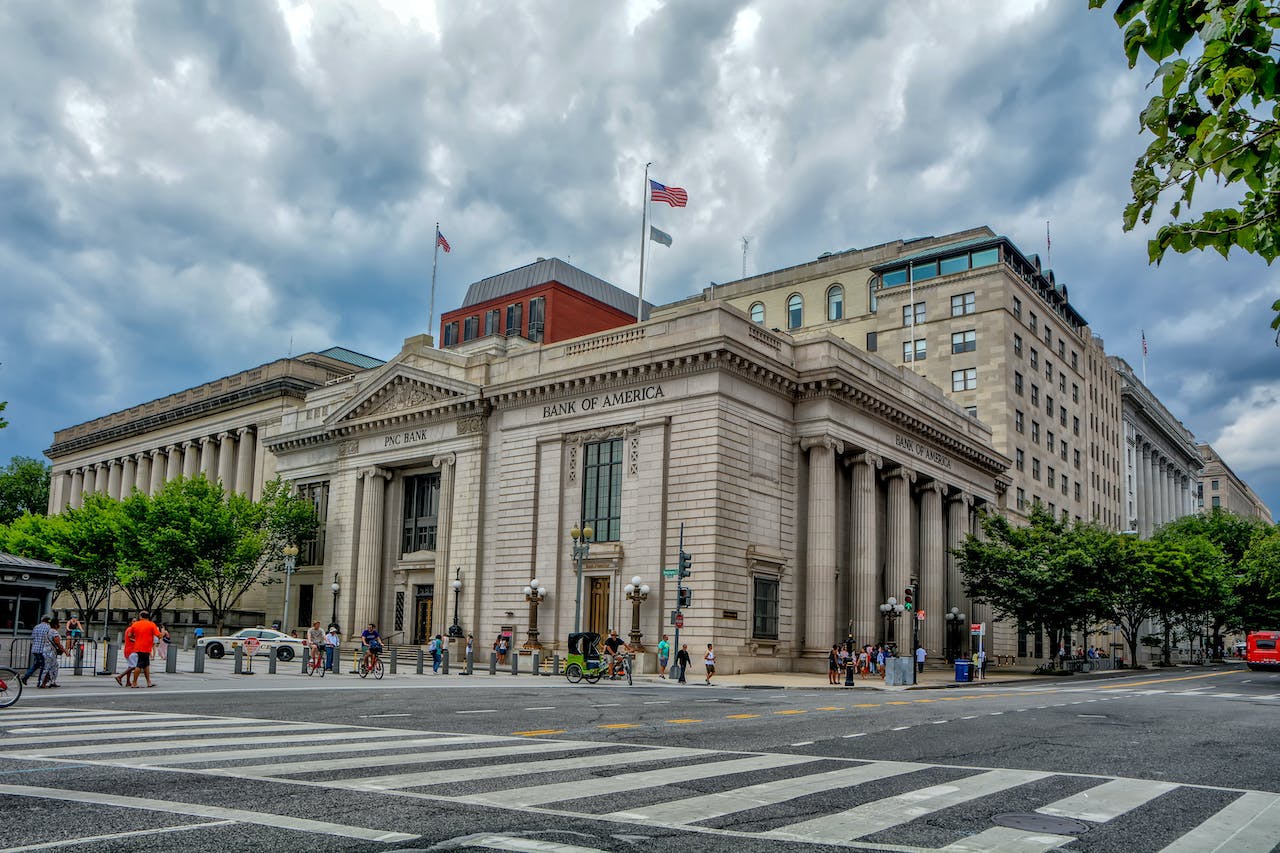Top executives from leading banks convened at the Goldman Sachs US Financial Services Conference in Manhattan on Tuesday, reiterating the prevailing themes of caution, care, and conservatism within the industry. Against the backdrop of an eventful 2023, the financial leaders discussed the resilience of the US economy but sounded warnings about ongoing loan losses, advocating for restraint in projecting 2024 outlooks.
Goldman Sachs (GS) CEO David Solomon kicked off the conference by describing 2023 as an “interesting year” marked by challenges such as a regional bank crisis in the spring, a rapid surge in interest rates, and geopolitical risks. Despite these hurdles, Solomon expressed confidence in the potential for a soft landing for the US economy, emphasizing the likelihood that the Federal Reserve could bring inflation back to its 2% target without triggering a recession. However, he urged a cautious approach as the industry approaches 2024.
Bank of America (BAC) CEO Brian Moynihan echoed Solomon’s sentiment, asserting that the economy had entered a soft landing and was well-positioned. Moynihan highlighted Bank of America’s data, indicating that consumer spending is growing at a pace of about 4%, significantly lower than the 9% growth witnessed from 2021 to 2022. He attributed this slowdown to a change in consumer spending behavior rather than a credit risk, noting a reduced appetite for credit.
Moynihan projected that the Federal Reserve would implement two or three interest rate cuts in the coming year and four times in 2025, signaling a commitment to a prolonged period of accommodative monetary policy.
Amid the economic discussions, major banks, including JPMorgan (JPM), Bank of America, Wells Fargo (WFC), and Citigroup (C), reported increased loan write-offs in the last quarter, totaling $5.2 billion—the highest collective amount since the early days of the pandemic in the second quarter of 2020. Despite the challenges, these institutions, with diversified revenue streams, emphasized their ability to set aside higher portions of capital to absorb losses compared to smaller banks.
Wells Fargo CEO Charles Scharf acknowledged the expectation of ongoing losses, particularly in the commercial real estate portfolio, but assured investors of the bank’s conservative reserves to absorb such anticipated setbacks.
The banking industry has faced a challenging year overall, witnessing nearly a trillion dollars in deposit outflows, leading to cutbacks in lending and, in some cases, the reduction of balance sheets and workforce. While both Bank of America and Wells Fargo reported higher-than-expected employee retention, the latter acknowledged elevated severance costs due to maintaining a more static workforce.
Compounding these challenges, rising compensation costs are anticipated across the industry. Goldman Sachs CFO Dennis Coleman indicated an expected increase in compensation costs “up low to single digits for the full year,” compared to the previous year’s total of $15.1 billion.
In response to these developments, stock prices for Bank of America and Wells Fargo experienced declines exceeding 1% by noon New York time, with Goldman Sachs facing a more substantial decline of over 2%.
Reflecting the industry’s struggles, bank stocks have lagged behind this year, with the KBW Nasdaq US bank index (^BKX) down approximately 14%, in contrast to the S&P 500’s gain of 19%. However, there are signs of potential recovery, as the index concluded November with its best monthly performance since February 2021.
In conclusion, as the banking industry charts its course into the upcoming year, the specter of ongoing loan losses in the US remains a critical factor, prompting financial institutions to strategically navigate uncertainties and implement robust measures to safeguard their stability and resilience in an ever-evolving economic landscape.
Source: Yahoo Finance



